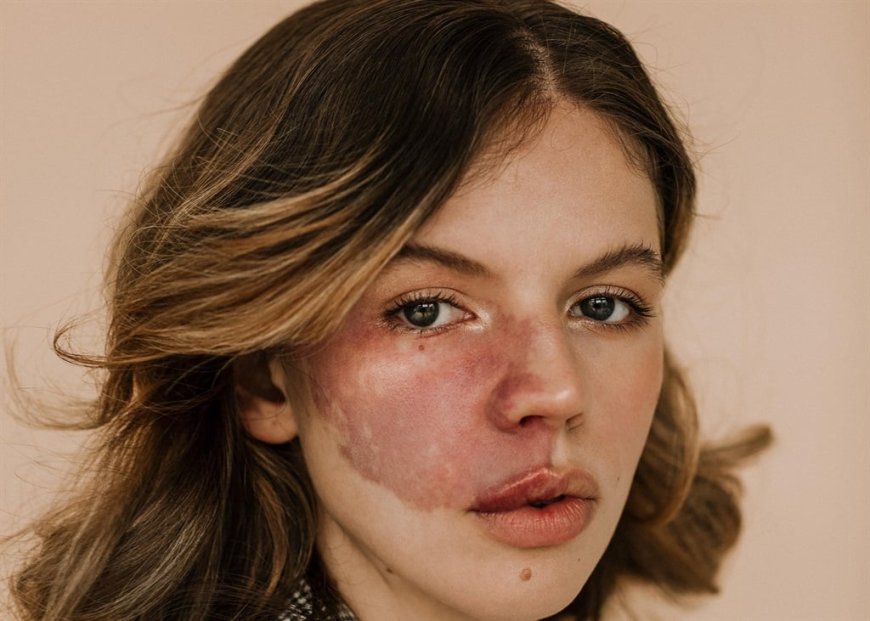Reveal your true skin with birthmark removal treatment in Dubai.
Read about how you can Reveal Your True Skin With Birthmark Removal Treatment In Dubai. Follow the techniques of top-notch professionals.

Introduction:
Birthmarks are not beauty spots! You often find them uncomfortable, especially when they are a hindrance to your appearance. But here’s the good news, you can now Reveal Your True Skin With Birthmark Removal Treatment In Dubai. The Dynamic Aesthetic Clinic is been successfully running this treatment for years with some exceptional results. Read about Birthmark removal treatment in Dubai and its outcomes.
Why Are Birthmarks So Visible?
Birthmarks are visible and common because of various conditions that occur during fetal development. These symptoms are caused by the abnormal accumulation of dark cells or blood vessels in the skin. Variables such as hereditary changes or differences in the arrangement of blood vessels can cause birthmarks.
Cause:
Although the exact cause is not clear. Some skin disorders, such as brown spots or moles, are caused by excess production of melanin, depending on the color of the skin. Skin pigments, such as hemangiomas or port wine spots, are caused by inadequate healing of blood vessels.
Birthmark Treatments in 2024:
Laser Treatment:
Pulse Dye Removal (PDL):
One of the most successful treatments for skin lesions, such as stretch marks and hemangiomas. PDL targets the blood vessels under the skin and reduces the color and appearance of the skin. Many areas are required to achieve optimal results.
Surgical Removal:
For visible skin lesions, such as moles, surgical removal is recommended. The specialists will carefully remove the flag and the surrounding skin will be punctured until the scar fades away. This strategy is usually used for smaller skin, in cases where laser treatment is not possible.
Medications:
-
Beta Blockers (propanolol):
Beta-blockers are commonly used to treat hemangioma. The treatment is always started in the first stages, and it is very reliable for the rapid development of the skin.
-
Corticosteroids:
These corticosteroids are given topically or by injection to reduce the development of the condition, especially larger hemangiomas. They work by reducing the irritation and abnormal contraction of blood vessels.
Cryotherapy:
This strategy involves correcting skin discoloration, discoloration, or deposits, such as moles, with liquid nitrogen. Cryotherapy crushes the abnormal cells in the birthmark and causes them to disappear. It is rarely used but can be used for certain skin types.
Radiofrequency Ablation:
This treatment uses radio energy to heat and destroy the birthmark tissue. It's exciting for sensitive skin, which can be reversed if laser or surgical strategies aren't effective.
Microneedling and platelet-rich plasma (PRP)
Microneedling and PRP are a new treatment for removing birthmarks. The microneedling handle tightens the skin, while the PRP accelerates skin repair and healing. This arrangement will reduce the skin color over time. Photodynamic therapy (PDT) PDT uses a combination of light-sensitive drugs and wavelengths of light to destroy skin cells. In general, it is important to treat hyperpigmentation that does not respond well to laser treatments and medications.
Stem Cell Therapy:
By 2024, advancements in stem cell therapy will have promising results for skin treatment. Stem cells are used to regenerate healthy skin tissue and possibly replace the pigments.
Can Everyone Get Birthmark Treatment?
Not everybody is a perfect candidate for the treatment. Candidates need to fulfill the valid requirements. As the qualification depends on a few variables they include:
-
The sort of skin coloration,
-
Its estimated area
-
The individual's skin type.
Medications like laser treatment or surgical expulsion may not be reasonable for exceptionally youthful children, people with certain therapeutic conditions, or those with delicate skin inclined to scarring. Furthermore, darker skin tones may require specialized lasers or elective strategies to maintain a strategic distance from complications like pigmentation changes.
Is The Treatment Long-lasting?
The survival of the treatment depends on the strategy used and the type of the treatment. For many patients, treatments such as laser therapy, surgical removal and cryotherapy can provide long-term, almost painless treatment. Laser treatments for skin pigmentation, such as port wine spots or hemangiomas, reduce the appearance of the skin and may be ineffective for a long time.
However, some blemishes, such as café au lait spots, will fade over time but will recur over time, requiring treatment each time. Over-the-counter medications, such as beta-blockers for hemangioma, can slow the progression of skin degeneration but may not eliminate it, especially in growing newborns.
Generally, treatment is more aggressive and irreversible, such as surgical removal. However, things like the sun and skin aging can affect the appearance for a long time, so proper care after treatment is important.
Are The Treatments Reversible?
In most cases, Beta blockers are irreversible. A skin peel removes the skin's color immediately, while laser drugs and cryotherapy remove dead cells. When the skin condition is treated, especially with surgery or laser, it cannot return to its original state.
However, if non-invasive treatments such as dermal fillers or specific medications are used, the effects will fade over time and the skin color will return. For people who are about to switch, it's important to fully explore treatment options with a professional to understand the potential for a change in the prescribed strategy.
The Final Verdict:
If you want to Reveal your true skin with birthmark removal treatment in Dubai then head to the Dynamic Clinic. An ideal treatment results depend on how the expert has formulated it. Note that birthmarks are not as bad as they sound unless they start to take a toll on the mental health of an individual.












